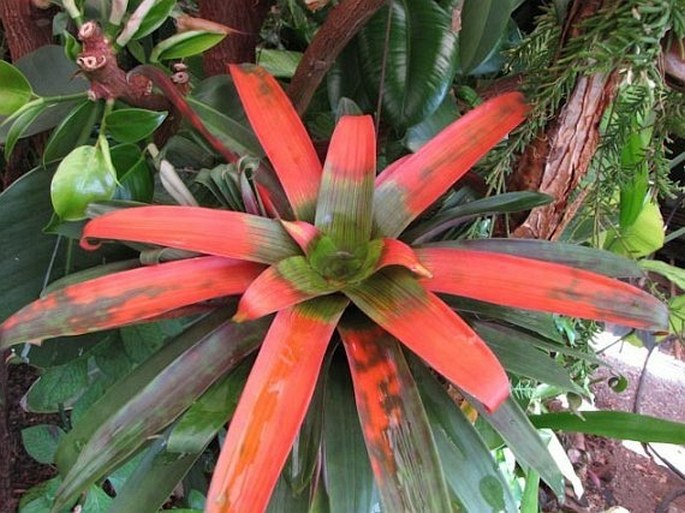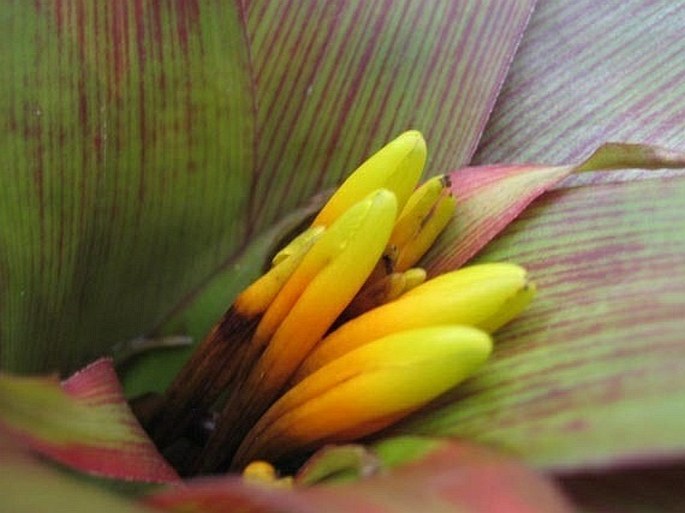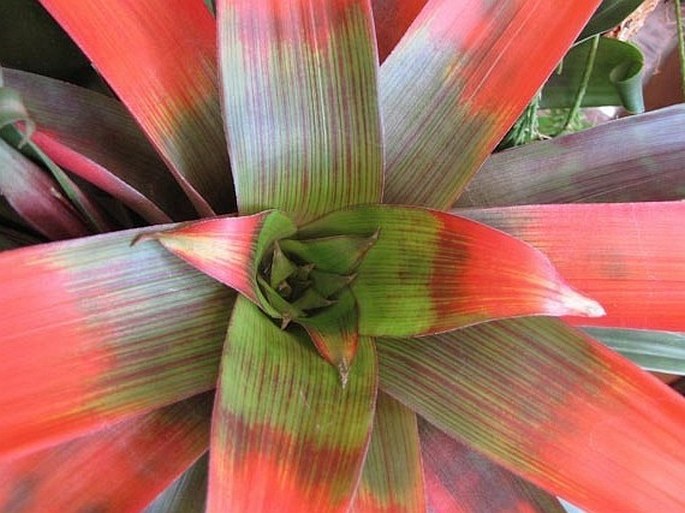Syn.: Caraguata sanguinea André, Tillandsia sanguinea André
Family: Bromeliaceae Juss.

Distribution: From Central America (Costa Rica, Panama) to northern part of South America (Colombia, Venezuela, Trinidad and Tobago). Reported from Brazil’s Nordeste (Ceara) showing totally disjointed distribution.
Ecology: Grows epiphytically in dense, wet forests, in upper canopy to reach light, in lowland rain forests and in high elevation cloud forests of Colombia and Ecuador up to 1600 m. Only mature plants bloom from July to October. Pollination is effected by hummingbirds, attracted to the plant by its red colour.
Description: Monocarpic, stemless, tank bromeliad of small size, 30–40 cm across, many-leaved rosette of soft, darker green leaves, 25–35 cm long, 5–7 cm wide, reddish lined and lightly lepidote underneath, lanceolate, apiculate, margins smooth. During the blooming period the appearance of the plants completely changes. The upper side of the leaves develops blood red lines at the centre and the remaining part of leaves turn completely blood red (sanguinea) on both sides. The red colouring is variable from plant to plant and even on the same plant from season to season. Although the plant is monocarpic, it reproduces vegetatively, unfortunately in this case with one offshoot only (var. brevipedicelata with two offshoots). On maturity of the offshoot you can possibly see a different shade of red. The pictured plant is several generations old from 1979 and although it is acaulescent, the stem after the previous generations developed to about 30 cm. The colors fade after blooming and the offshoot starts developing. Inflorescence is a short raceme on extremely short peduncle with flowers 7–12 in number, not reaching the top of tank leaves. Flowers with pedicels, 0.5–1.2 cm long; bracts are about 16–22 mm long, shorter than sepals, membraneous, keel-like, greenish; sepals 2.5 mm long, smooth, green; corolla up to 6 cm long, trimerous, petals rich yellow with orange base. Fruit is a capsule filled with achenes, cylindrical, with a pappus.
Note: The genus was named after a Spanish naturalist Anastasio Guzman (died in 1807).




These images were taken in culture.


